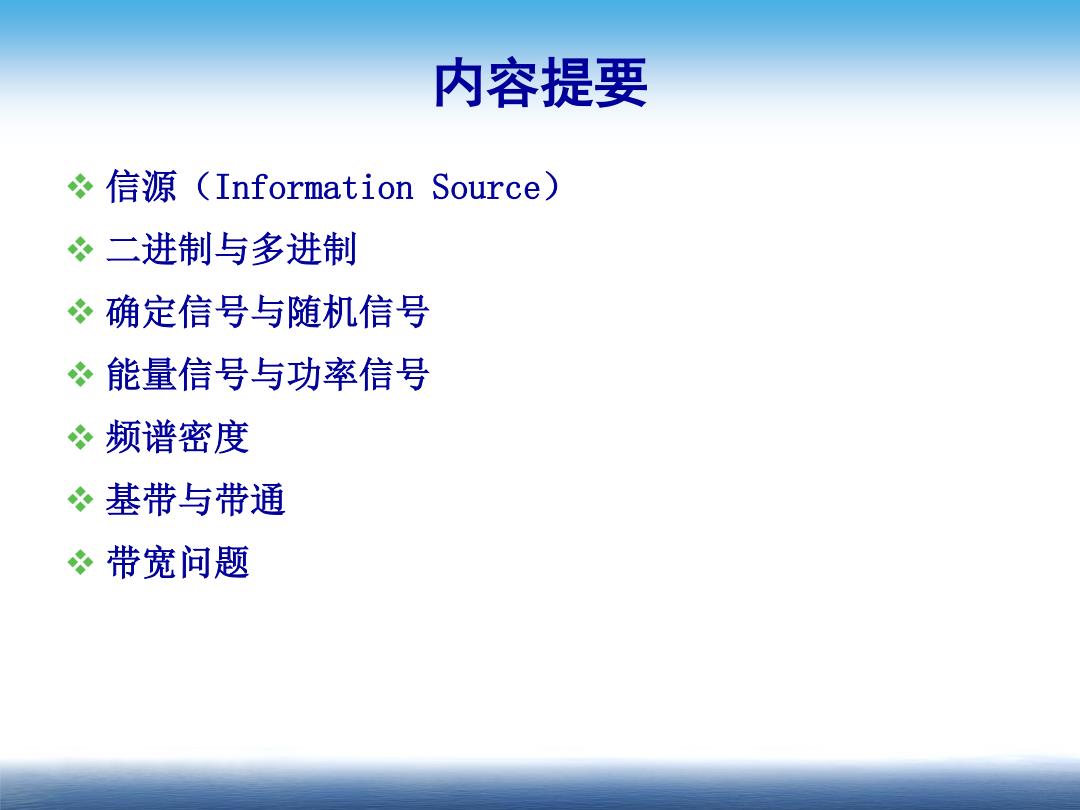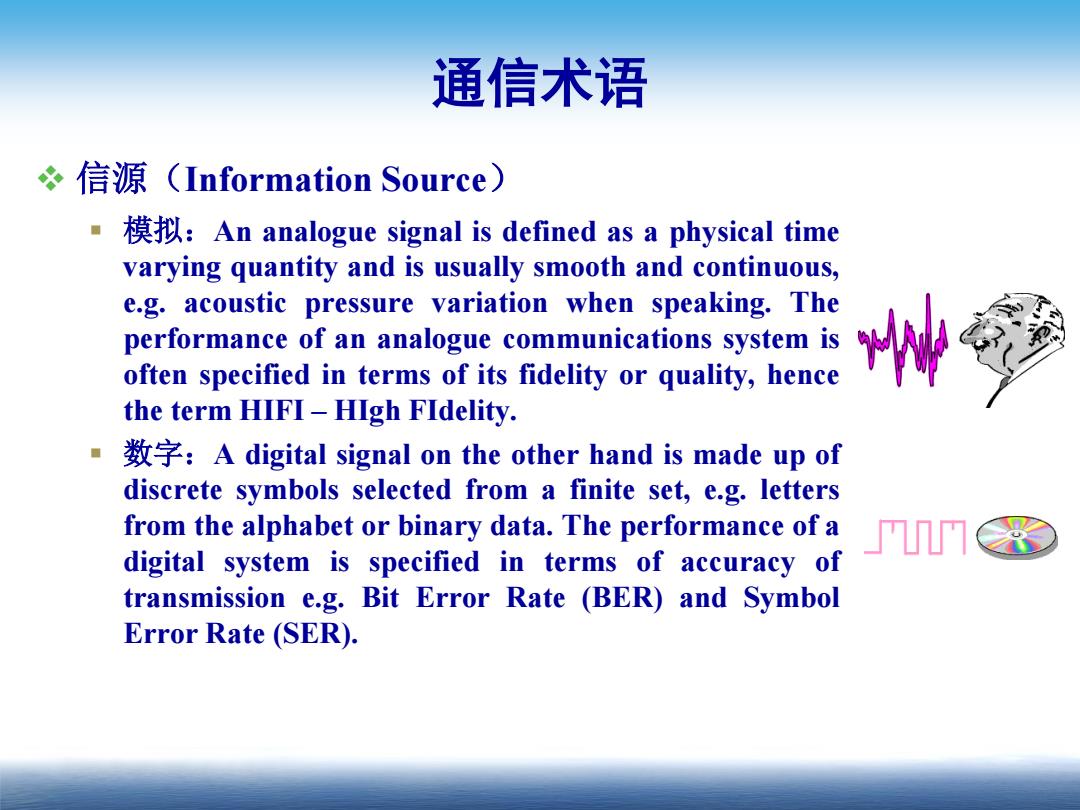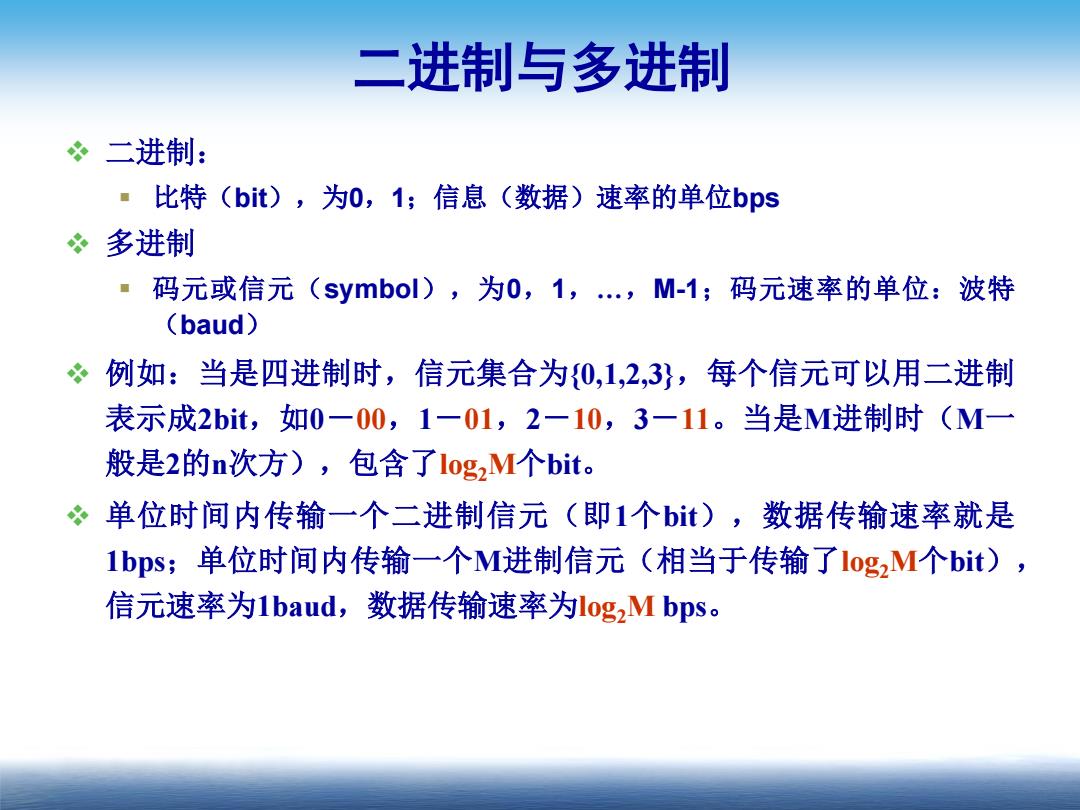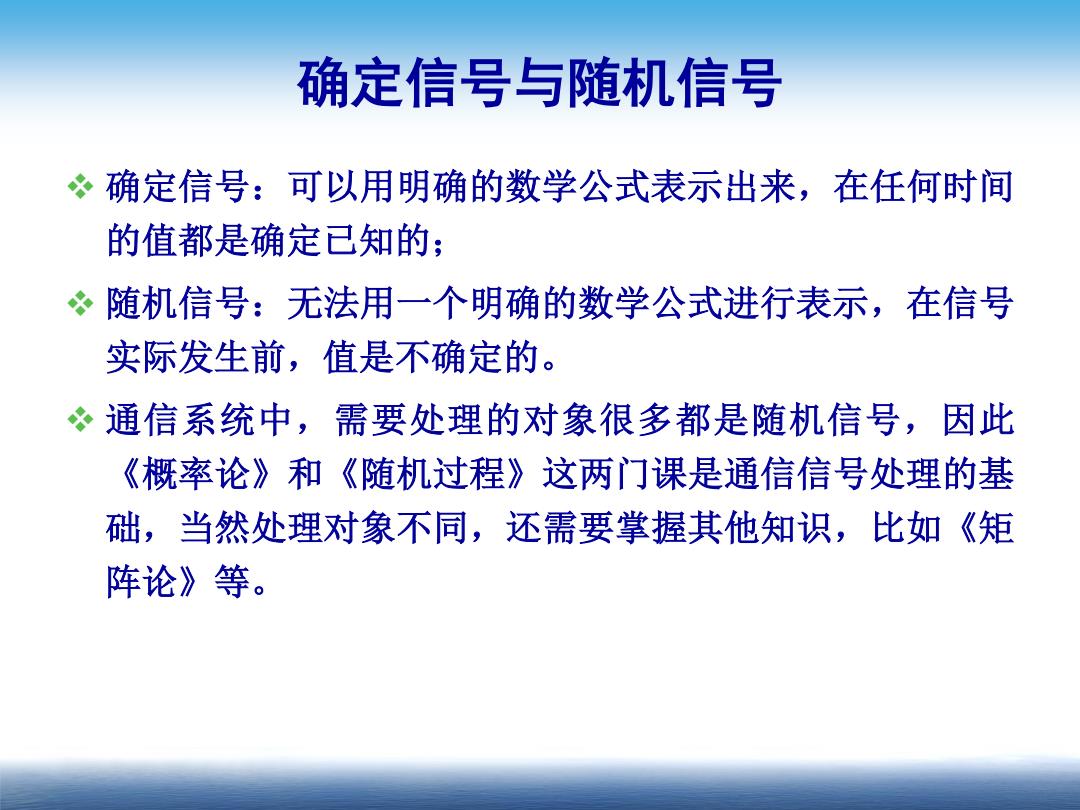
第二章基本概念与基础知识
第二章 基本概念与基础知识

内容提要 信源(Information Source) 冬二进制与多进制 冬确定信号与随机信号 冬能量信号与功率信号 。频谱密度 基带与带通 冬带宽问题
内容提要 信源(Information Source) 二进制与多进制 确定信号与随机信号 能量信号与功率信号 频谱密度 基带与带通 带宽问题

通信术语 信源(Information Source) 模拟:An analogue signal is defined as a physical time varying quantity and is usually smooth and continuous, e.g.acoustic pressure variation when speaking.The performance of an analogue communications system is often specified in terms of its fidelity or quality,hence the term HIFI-HIgh FIdelity. ■ 数字:A digital signal on the other hand is made up of discrete symbols selected from a finite set,e.g.letters from the alphabet or binary data.The performance of a T digital system is specified in terms of accuracy of transmission e.g.Bit Error Rate (BER)and Symbol Error Rate (SER)
通信术语 信源(Information Source) 模拟:An analogue signal is defined as a physical time varying quantity and is usually smooth and continuous, e.g. acoustic pressure variation when speaking. The performance of an analogue communications system is often specified in terms of its fidelity or quality, hence the term HIFI – HIgh FIdelity. 数字:A digital signal on the other hand is made up of discrete symbols selected from a finite set, e.g. letters from the alphabet or binary data. The performance of a digital system is specified in terms of accuracy of transmission e.g. Bit Error Rate (BER) and Symbol Error Rate (SER)

二进制与多进制 冬二进制: ■比特(bit),为0,1;信息(数据)速率的单位bps 。多进制 ■码元或信元(symbol),为0,1,..,M-1;码元速率的单位:波特 (baud) 例如:当是四进制时,信元集合为{0,1,2,3},每个信元可以用二进制 表示成2bit,如0一00,1一01,2一10,3一11。当是M进制时(M一 般是2的n次方),包含了log2M个bit。 单位时间内传输一个二进制信元(即1个bit),数据传输速率就是 1bps;单位时间内传输一个M进制信元(相当于传输了1og2M个bit), 信元速率为1baud,数据传输速率为log2Mbps
二进制与多进制 二进制: 比特(bit),为0,1;信息(数据)速率的单位bps 多进制 码元或信元(symbol),为0,1,…,M-1;码元速率的单位:波特 (baud) 例如:当是四进制时,信元集合为{0,1,2,3},每个信元可以用二进制 表示成2bit,如0-00,1-01,2-10,3-11。当是M进制时(M一 般是2的n次方),包含了log2M个bit。 单位时间内传输一个二进制信元(即1个bit),数据传输速率就是 1bps;单位时间内传输一个M进制信元(相当于传输了log2M个bit), 信元速率为1baud,数据传输速率为log2M bps

确定信号与随机信号 冬确定信号:可以用明确的数学公式表示出来,在任何时间 的值都是确定已知的; 。随机信号:无法用一个明确的数学公式进行表示,在信号 实际发生前,值是不确定的。 通信系统中,需要处理的对象很多都是随机信号,因此 《概率论》和《随机过程》这两门课是通信信号处理的基 础,当然处理对象不同,还需要掌握其他知识,比如《矩 阵论》等
确定信号与随机信号 确定信号:可以用明确的数学公式表示出来,在任何时间 的值都是确定已知的; 随机信号:无法用一个明确的数学公式进行表示,在信号 实际发生前,值是不确定的。 通信系统中,需要处理的对象很多都是随机信号,因此 《概率论》和《随机过程》这两门课是通信信号处理的基 础,当然处理对象不同,还需要掌握其他知识,比如《矩 阵论》等